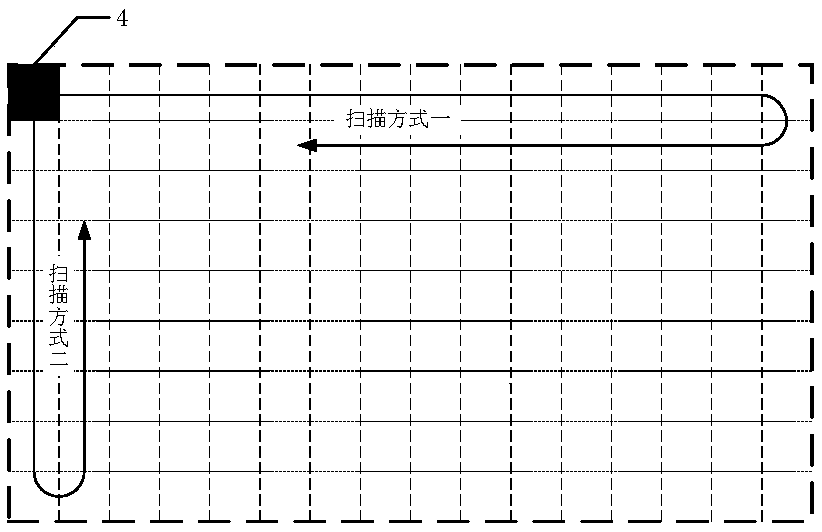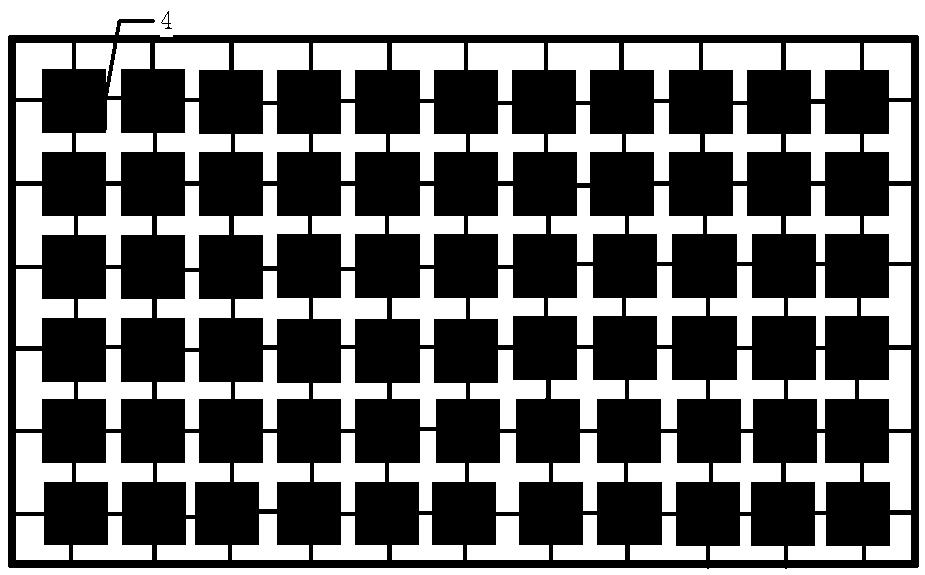Rydberg atomic quantum coherence effect based antenna near field test probe and method
A quantum coherence and antenna technology, applied in antenna radiation patterns, measuring devices, measuring electrical variables and other directions, can solve the problems of low signal-to-noise ratio, low sensitivity, low gain, etc., and achieve high sensitivity and precision, high resolution, Sensitive effect
- Summary
- Abstract
- Description
- Claims
- Application Information
AI Technical Summary
Problems solved by technology
Method used
Image
Examples
Embodiment 1
[0033] In this embodiment, a probe including a probe unit is used to test the near field of the electromagnetic field of the antenna.
[0034] The probe used in this embodiment includes a probe unit, the probe unit, such as figure 1 As shown, it includes an alkali metal atomic gas cell, a fiber coupler and an optical fiber. The alkali metal atomic gas cell has a light-transmitting channel, and the fiber-optic coupler connects the optical fiber to the light-transmitting channel of the probe unit, injecting probe light and coupling light through the fiber The alkali metal atoms are excited to the Rydberg state, and the sensor of the probe is the atom in the Rydberg state. Among them, the alkali metal atomic gas chamber is made of ultra-high vacuum quartz atomic gas chamber technology, and the alkali metal atoms enclosed in it are mainly rubidium atoms and cesium atoms. Other types of alkali metal atoms can meet certain requirements under certain conditions. The gas cell pressur...
Embodiment 2
[0052] In this embodiment, a phase probe is added on the basis of the probe unit in Embodiment 1.
[0053] An antenna near-field test composite probe based on the Rydberg atomic quantum coherence effect, such as Figure 5 As shown, including the probe unit and the phase probe in Embodiment 1, the phase probe is composed of a semi-rigid coaxial line extending out of the inner conductor, that is, the inner conductor of the semi-rigid coaxial line extends from one end of the semi-rigid coaxial line The protruding phase probe is placed outside the atomic gas chamber, which can be attached to the epitaxy of the atomic gas chamber.
[0054] The initialization process of the composite probe and the method for measuring the electromagnetic field strength are consistent with the probe initialization and the method for measuring the electromagnetic field strength described in Embodiment 1. The difference is that when measuring the phase, the phase probe is used to accurately measure th...
Embodiment 3
[0056] In this embodiment, the probe unit is used to construct the array. The probe unit may be the probe unit in Embodiment 1, or the composite probe in Embodiment 2.
[0057] An antenna near-field test probe array based on the Rydberg atomic quantum coherence effect, such as image 3 As shown in Fig. 1, multiple probe units are used to calculate the probe layout spacing according to the Nyquist sampling law to form an antenna near-field test probe array. Since the external dimensions of the probe unit can be made very small, a probe array composed of small probe units can be constructed as a reflection of the electric field intensity in a two-dimensional space. Functionally, it is equivalent to an electromagnetic field camera, similar to a CCD array in the field of optical imaging. The smaller the single probe unit and the denser the periodic arrangement, the wider the measurable frequency range. For example, according to the Nyquist sampling law, a probe array arranged a...
PUM
 Login to View More
Login to View More Abstract
Description
Claims
Application Information
 Login to View More
Login to View More - R&D
- Intellectual Property
- Life Sciences
- Materials
- Tech Scout
- Unparalleled Data Quality
- Higher Quality Content
- 60% Fewer Hallucinations
Browse by: Latest US Patents, China's latest patents, Technical Efficacy Thesaurus, Application Domain, Technology Topic, Popular Technical Reports.
© 2025 PatSnap. All rights reserved.Legal|Privacy policy|Modern Slavery Act Transparency Statement|Sitemap|About US| Contact US: help@patsnap.com



